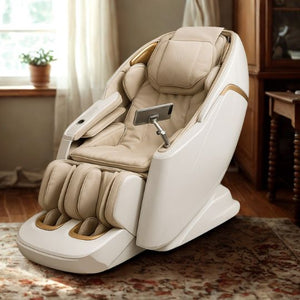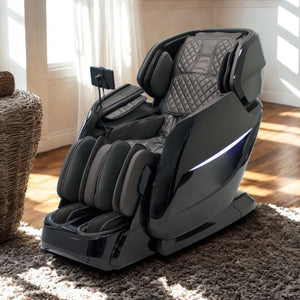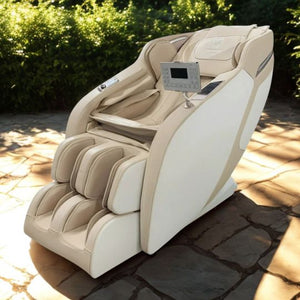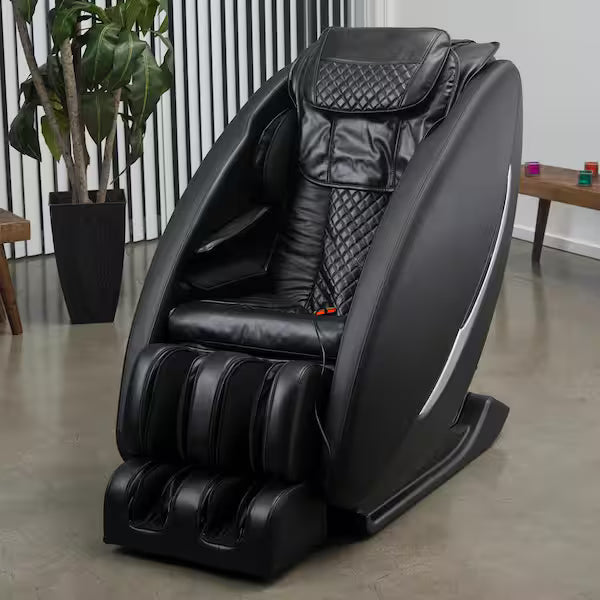The evolution of massage chair aesthetics
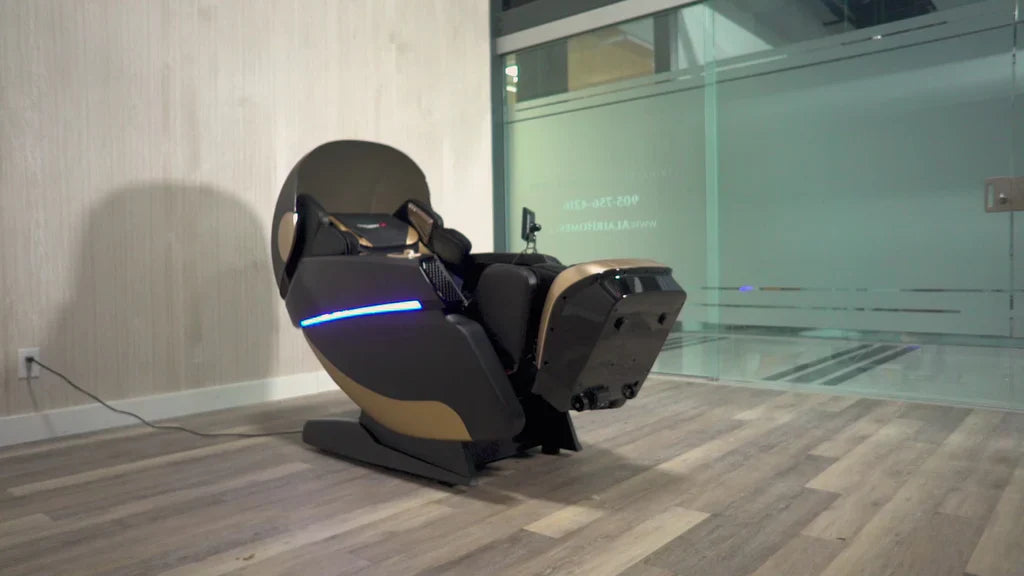
The Evolution of Massage Chair Aesthetics
Introduction: More Than Just Function
Massage chairs have come a long way since their earliest prototypes. What was once a bulky, purely functional device has now become a symbol of luxury, wellness, and even interior design sophistication. The aesthetics of massage chairs have evolved in tandem with technology, consumer expectations, and cultural influences. Today, they are not just machines that knead muscles—they are lifestyle products that blend into homes, offices, and spas as seamlessly as a high-end sofa or recliner.
This article explores the historical transformation of massage chair aesthetics, from their utilitarian origins to futuristic, design-led innovations. We will examine the milestones, cultural shifts, and market trends that shaped the way massage chairs look and feel today, with particular attention to the rising demand for premium styles in Asian markets such as Massage chair Cambodia.
1. Origins: The Functional Beginnings (1950s–1970s)
The first massage chairs were invented in the mid-20th century, primarily in Japan and the United States. They were designed with one goal in mind: mechanical relief for sore muscles. Aesthetics were secondary.
-
Industrial Look: Early models resembled medical equipment more than furniture. Large, visible levers and exposed mechanical parts dominated their appearance.
-
Heavy Frames: Built with metal and thick leather, these chairs were bulky and often immovable. They looked more like dentist chairs than living room furniture.
-
Limited Market Appeal: Only spas, health clinics, and the wealthy could afford them. They weren’t marketed as lifestyle products but as functional wellness machines.
At this stage, aesthetics were almost irrelevant. Consumers were more interested in whether the machine could replicate shiatsu or rolling techniques, not whether it matched their living room décor.
2. Shifts Toward Comfort and Integration (1980s)
By the 1980s, massage chairs began entering the consumer household market. To appeal to families, manufacturers had to rethink design.
-
Softer Materials: Vinyl and synthetic leathers in neutral colors replaced the cold, medical-style finishes.
-
Recliner Inspiration: Designers borrowed cues from La-Z-Boy recliners, making massage chairs resemble ordinary lounge chairs.
-
Compact Models: While still bulky, companies experimented with more compact frames to fit smaller homes.
This decade marked the beginning of massage chairs becoming part of the living room. They were no longer restricted to medical clinics; instead, they started to blend with home décor.
3. The Luxury Wellness Era (1990s–2000s)
In the 1990s, wellness trends exploded worldwide. People increasingly invested in home fitness equipment, spa treatments, and holistic self-care products. This cultural wave transformed massage chair aesthetics.
-
Premium Finishes: Leather upholstery in black, brown, and cream tones became standard. Chairs looked more luxurious and less mechanical.
-
Wood Accents: Some high-end models featured wooden side panels, borrowing from luxury car interiors.
-
Minimalist Controls: Instead of bulky switches, remote controls with sleek designs were introduced.
The 1990s and early 2000s also saw Japanese innovation dominating the market. Brands like Inada and Panasonic pushed design boundaries, turning massage chairs into symbols of modern luxury.
4. The Fusion of Technology and Design (2010s)
The 2010s marked a golden age for massage chair aesthetics. Rapid technological advancements in robotics, AI, and ergonomics demanded equally advanced visual design.
-
Sleek Silhouettes: Chairs began to adopt futuristic curves, giving them a spaceship-like appearance.
-
Zero-Gravity Recline: Inspired by NASA technology, these designs emphasized floating sensations, which required new aesthetic approaches.
-
LED Lighting: Built-in ambient lighting made chairs double as mood-enhancing furniture.
-
Color Expansion: Beyond black and brown, chairs started appearing in white, beige, metallic tones, and even bold colors like red.
Aesthetics became a competitive differentiator. Consumers no longer asked only, “Does it massage well?” but also, “Does it look good in my home?”
5. Cultural Influence and Localization
The design of massage chairs is not universal. Different regions influenced how these chairs looked and felt.
-
Japan: Focused on minimalism, compactness, and integration with smaller living spaces.
-
United States: Favored oversized, recliner-like models with plush cushioning and cup holders.
-
Europe: Prioritized sleek, luxury-inspired aesthetics to blend with modern interior design.
-
Southeast Asia (including Massage chair Cambodia): Consumers value elegance, cultural symbolism, and affordability. Chairs with golden trims or subtle traditional influences appeal to this market.
This localization highlights how aesthetics are not only about technology but also about culture and lifestyle.
6. The Rise of Smart Luxury (2020s)
Today’s massage chairs are masterpieces of both engineering and design. Aesthetics play a crucial role in defining their premium identity.
-
Integration with Smart Homes: Voice-controlled chairs with app connectivity require interfaces that look as good as they function.
-
Minimalist Futurism: Many chairs adopt Apple-inspired minimalism with seamless curves and hidden mechanics.
-
Sustainable Materials: Eco-conscious consumers demand vegan leather and recyclable components, influencing color and texture trends.
-
Wellness Zones: Chairs are now designed to fit into “wellness corners” of homes, meaning their look must harmonize with yoga mats, aromatherapy diffusers, and spa-like interiors.
Modern consumers want their massage chair to double as a statement piece, much like an Italian leather sofa or a designer lamp.
7. Case Study: Massage Chair Cambodia and Regional Trends
The Cambodian market provides a fascinating example of how massage chair aesthetics are adapting in real time.
-
Growing Demand: As wellness awareness grows, Cambodians increasingly view massage chairs as lifestyle investments rather than luxury novelties.
-
Cultural Harmony: Many designs incorporate warm tones and textures that blend with Cambodian wooden furniture traditions.
-
Urban vs. Rural Preferences: In Phnom Penh, sleek, modern designs dominate, while in smaller towns, practical, durable, and affordable designs are preferred.
-
Showroom Experience: Retailers of Massage chair Cambodia emphasize showroom displays that make chairs look like natural extensions of living rooms.
By understanding regional preferences, brands tailor both aesthetics and marketing strategies to resonate with Cambodian buyers.
8. Design Philosophy: From Machines to Companions
A key reason massage chair aesthetics have transformed so dramatically is the shift in how people perceive them.
-
Then: Machines for physical therapy.
-
Now: Companions for lifestyle, wellness, and relaxation.
This change required a rethinking of design philosophy:
-
Human-Centered Design: Chairs now mimic the natural posture and contours of the human body.
-
Emotional Design: Lighting, textures, and colors are chosen to evoke calmness.
-
Invisible Technology: The best designs hide their complexity, making the user focus on the experience rather than the machine.
9. Future Aesthetics: Where Are We Headed?
Looking forward, several aesthetic trends are set to dominate the next generation of massage chairs:
-
Customizable Skins – Replaceable side panels and upholstery to match changing home décor.
-
Modular Designs – Chairs that transform into loungers, workstations, or VR gaming pods.
-
Biophilic Influence – Natural wood finishes, stone accents, and plant-inspired curves to enhance wellness environments.
-
Holographic Interfaces – Removing physical remotes in favor of projected controls.
-
Invisible Luxury – Chairs so seamlessly integrated into sofas or walls that they reveal themselves only when activated.
These innovations will make massage chairs not only wellness tools but also central pieces of futuristic interior design.
10. The Balance of Form and Function
Ultimately, the evolution of massage chair aesthetics underscores a timeless design principle: balance. Too much emphasis on appearance without functionality undermines the product. Too much focus on mechanics without beauty alienates modern consumers.
The best designs—whether in Japan, Europe, or Massage chair Cambodia—strike a balance between:
-
Comfort
-
Technology
-
Cultural Harmony
-
Timeless Aesthetics
This delicate balance ensures that massage chairs will continue to evolve as both technological marvels and lifestyle icons.
Conclusion: The Journey from Utility to Beauty
From clunky, hospital-like contraptions to elegant, smart, and sustainable wellness companions, massage chairs have undergone a remarkable aesthetic transformation. What was once hidden in the back room of a clinic is now proudly displayed in living rooms, offices, and spas worldwide.
The evolution of massage chair aesthetics mirrors broader cultural trends in wellness, luxury, and design. And as markets like Massage chair Cambodia continue to grow, we will likely see even more localized, culturally attuned innovations.
In the future, massage chairs will not only care for our bodies but also enhance the beauty of our spaces—embodying the perfect fusion of wellness and design.

